The Kraszna-Kraus Book Awards celebrate books that have made an outstanding, original or lasting contribution to the literature of photography and the moving image.
The longlist this year includes photobooks from around the globe, covering a spectrum of themes ranging from Leica photography to the story of segregation.
The final shortlist comprises a retrospective of rare Soviet photobooks, a meditation on memory through the prism of the Israeli-Palestinian conflict and an insight into the lives of nine young people living in post-revolution Iran. The books deal with issues such as memory, stereotypes, and the impact of conflict on places and people.

Kraszna-Krausz photography shortlisted photobooks
The winners of the Best Photography Book Awards, together with the Best Moving Image Book Award, will be announced at Photo London on 19 May 2016, with prize money of £10,000 divided between the two awards. The complete longlists will be on exhibition during Photo London at Somerset House from 19-22 May 2016.
The shortlist for this year’s awards is as follows:
Blank Pages of an Iranian Photo Album
by Newsha Tavakolian (Kehrer Verlag)


Spread from the photobook Blank Pages of an Iranian Photo Album © Newsha Tavakolian
Blank Pages of an Iranian Photo Album is a meditation on memory through the prism of the Israeli-Palestinian conflict.
Newsha describes her aims for this work: ‘The family photo album is the showcase for my generation. The yellowed albums and the pictures of smiling children dressed up in their best clothes are testament to our hopes and dreams, but they end in blank pages, and the moment when our parents stopped taking our pictures.’
‘For this project, I have decided to continue the photo albums of my generation. To add the pictures that were never taken of the way that life is for them now, grownup. I followed nine people who in a sense define this generation. They are interchangeable, thus representing many. This photo album is theirs; it is my vision of life in Iran now, unromantic and confined. Those who feature on the pages are interchangeable, placed randomly in the natural installation of what is and can be their daily lives.’
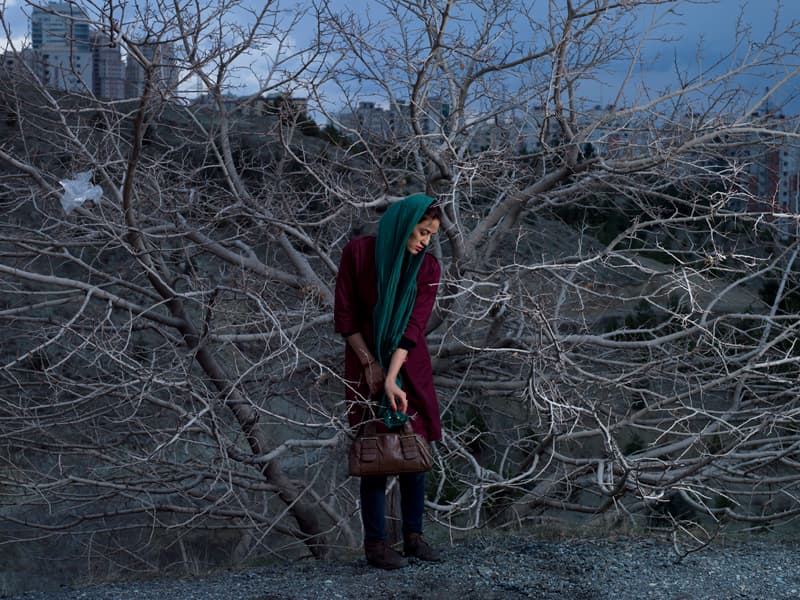
Image from the photobook Blank Pages of an Iranian Photo Album © Newsha Tavakolian
Judges said of the work:
‘Newsha Tavakolian’s photographs provide a fresh and considered account of life in contemporary Iran that challenges many of the existing stereotypes and images reported by mainstream media.’
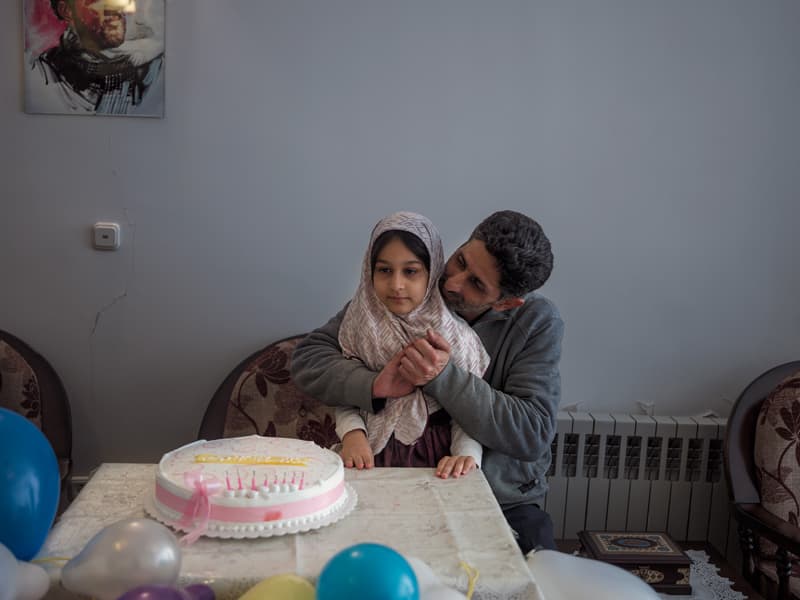
Image from the photobook Blank Pages of an Iranian Photo Album © Newsha Tavakolian
The Erasure Trilogy
by Fazal Sheikh (Steidl Verlag)

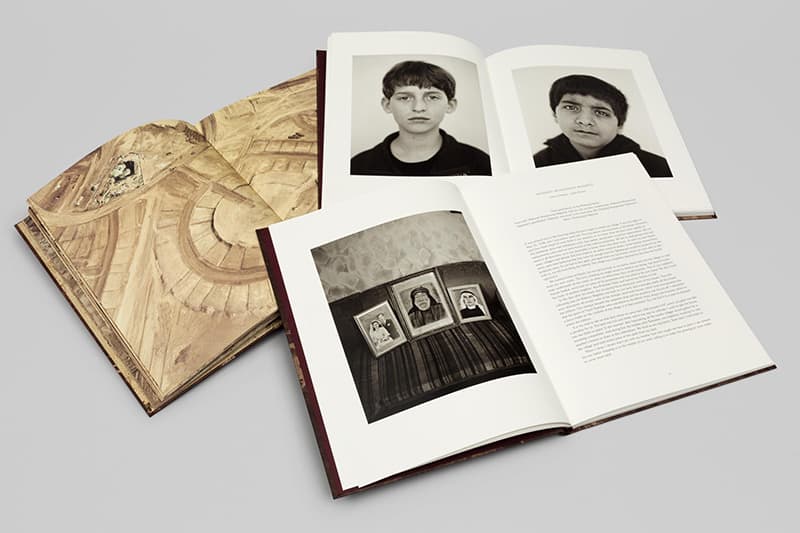
Spread from the photobook Erasure © Fazal Sheikh
The Erasure Trilogy explores the anguish caused by the loss of memory – by forgetting, amnesia or suppression – and the resulting human desire to preserve memory, all seen through the prism of the Israeli-Palestinian conflict.
Memory Trace, the first book in the trilogy, depicts the ruins caused by the Arab-Israeli War of 1948: portraits of those traumatized by violence, devastated landscapes and fragments of buildings.
Desert Bloom traces the ironic consequences of David Ben-Gurion’s dream of settling in the Negev and making the ‘desert bloom’, the aerial photographs reveal the myriad actions that have displaced and erased the Bedouins who have lived in the desert for generations.
Independence/Nakba consists of sixty-six diptychs — one for each year since 1948 — pairing people from both sides of the Israeli-Palestinian conflict, gradually increasing age. The double portraits query the relations between Israelis and Palestinians before the founding of the Israeli State.

Image from the photobook Erasure © Fazal Sheikh
Judges said of the trilogy:
‘The Erasure Trilogy poetically deals with memory loss and the desire to preserve memory through Fazal Sheikh’s systematic documentation of a region of the world where land rights and national boundaries are constantly in contention.’

Image from the photobook Erasure © Fazal Sheikh
The Soviet Photobook 1920-1941
by Mikhail Karasik, edited by Manfred Heiting (Steidl)

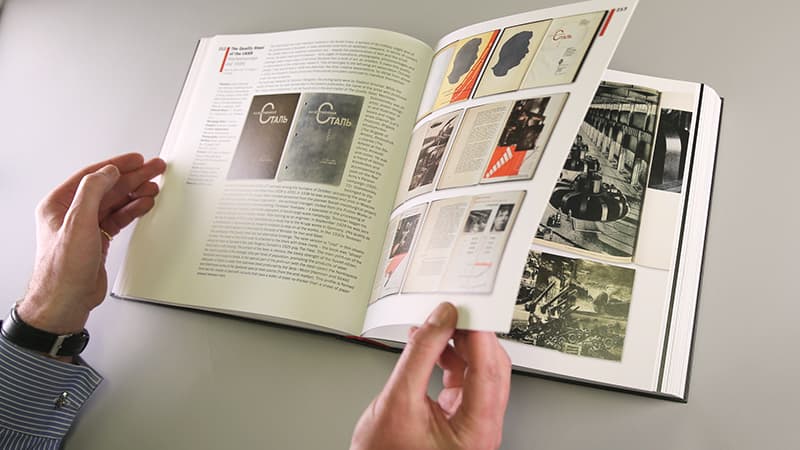
Spread from the photobook The Soviet Photobook © Manfried Heiting
The Soviet Photobook 1920–1941 presents 160 of the most stunning and elaborately produced photobooks from this period and includes more than 400 additional reference illustrations. The book also provides short biographies of the photobook contributors, some of whom are presented here for the first time.

Image from the photobook The Soviet Photobook © Manfried Heiting
Judges said of The Soviet Photobook:
‘A wonderful treasure-trove in which Karasik and Heiting present, in great detail, 160 of the very best Soviet photobooks from this most radical period of design and photography.’
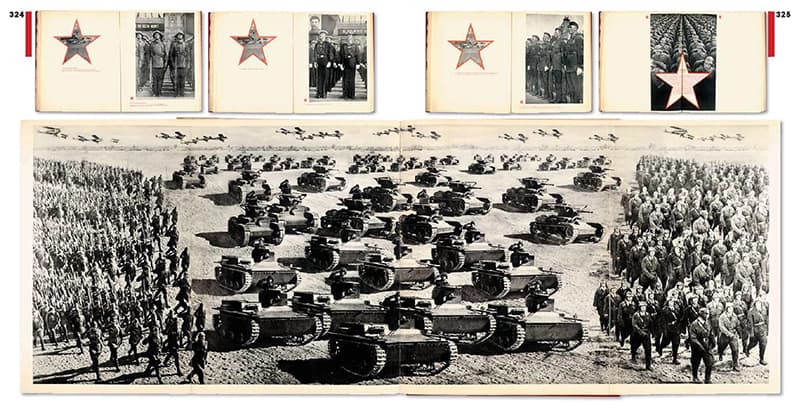
Image from the photobook The Soviet Photobook © Manfried Heiting
The shortlist was selected by judges Anne Lyden (Chair), Mark Power and Julian Stallabrass.
Best Photography Book Award Longlist
- Blank Pages of an Iranian Photo Album by Newsha Tavakolian (Kehrer Verlag)
- T.R. Ericsson: Crackle and Drag by Barbara L Tannenbaum and Arnaud Gerspacher (Yale University Press)
- The Erasure Trilogy by Fazal Sheikh (Steidl)
- Eyes Wide Open! 100 Years of Leica Photography edited by Hans-Michael Koetzle and translated by Alexandra Cox (Kehrer Verlag)
- Gordon Parks: Segregation Story by Gordon Parks and Michael E. Shapiro (Steidl)
- Roman Vishniac Rediscovered by Maya Benton (Prestel)
- The Heavens: Annual Report by Paolo Woods and Gabriele Galimberti, essay by Nicholas Shaxson (Dewi Lewis)
- The Photograph and Australia by Judy Annear and Michael Brand (The Art Gallery of New South Wales)
- The Soviet Photobook 1920-1941 by Mikhail Karasik, edited by Manfred Heiting (Steidl)
- Viviane Sassen: Umbra by Viviane Sassen (Prestel)
The Best Moving Image Book Award Shortlist
The Best Moving Image Book Award Shortlist has also been announced. The chosen moving image works trace the development of black cinema in Los Angeles and enrich our understandings of early cinematic colour, illustrating the relationship between film and modernist art movements in early 20th-century Paris.
The shortlist includes:
- Fantasia of Color in Early Cinema, Tom Gunning, Joshua Yumibe, Giovanni Fossati, Jonathon Rosen (Amsterdam University Press)
- L.A. Rebellion: Creating a New Black Cinema, edited by Allyson Nadia Field, Jan-Christopher Horak, Jacqueline Najuma Stewart (University of California Press)
- The Parisian Avant-Garde in the Age of Cinema, 1900-1923, Jennifer Wild (University of California Press).








